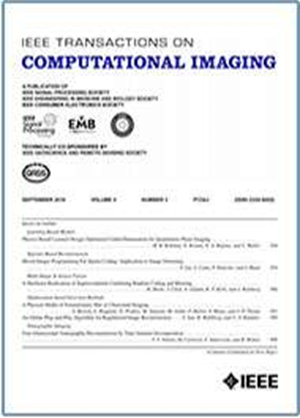Enhanced Single Pixel Imaging by Using Adaptive Jointly Optimized Conditional Diffusion
IF 4.8
2区 计算机科学
Q2 ENGINEERING, ELECTRICAL & ELECTRONIC
引用次数: 0
Abstract
Single-pixel imaging can reconstruct the original image at a low measurement rate (MR), and the target can be measured and reconstructed in low-light environments by capturing the light intensity information using a single-photon detector. Optimizing reconstruction results at low MR has become a focal point of research aimed at enhancing measurement efficiency. The application of neural network has significantly improved reconstruction quality, but the performance still requires further enhancement. In this paper, a Diffusion Single Pixel Imaging Model (DSPIM) method is proposed. The conditional diffusion model is utilized in the training and reconstruction processes of single-pixel imaging and is jointly optimized with an autoencoder network. This approach simulates the measurement and preliminary reconstruction of images, which are incorporated into the diffusion process as conditions. The noises and features are learned through a designed loss function that consists of predicted noise loss and measurement accuracy loss, allowing the reconstruction to perform well at very low MR. Besides, an adaptive regularization coefficients adjustment method (ARCA) has been designed for more effective optimization. Finally, the learned weights are loaded into the single photon counting system as a measurement matrix, demonstrating that the blurriness caused by insufficient features at low MR is effectively addressed using our methods, resulting in clearer targets and well-distinguished features.自适应联合优化条件扩散增强单像素成像
单像素成像可以在低测量率(MR)下重建原始图像,利用单光子探测器捕获光强信息,可以在低光环境下测量和重建目标。为提高测量效率,优化低磁共振重建结果已成为研究的热点。神经网络的应用显著提高了重建质量,但性能仍有待进一步提高。本文提出了一种扩散单像素成像模型(DSPIM)方法。将条件扩散模型应用于单像素图像的训练和重建过程,并与自编码器网络进行联合优化。该方法模拟了图像的测量和初步重建,并将其作为条件纳入扩散过程。通过设计的由预测噪声损失和测量精度损失组成的损失函数来学习噪声和特征,使重建在非常低的mr下表现良好。此外,设计了自适应正则化系数调整方法(ARCA)以实现更有效的优化。最后,将学习到的权重作为测量矩阵加载到单光子计数系统中,表明使用我们的方法有效地解决了低MR下特征不足导致的模糊问题,从而获得了更清晰的目标和更好的特征。
本文章由计算机程序翻译,如有差异,请以英文原文为准。
求助全文
约1分钟内获得全文
求助全文
来源期刊

IEEE Transactions on Computational Imaging
Mathematics-Computational Mathematics
CiteScore
8.20
自引率
7.40%
发文量
59
期刊介绍:
The IEEE Transactions on Computational Imaging will publish articles where computation plays an integral role in the image formation process. Papers will cover all areas of computational imaging ranging from fundamental theoretical methods to the latest innovative computational imaging system designs. Topics of interest will include advanced algorithms and mathematical techniques, model-based data inversion, methods for image and signal recovery from sparse and incomplete data, techniques for non-traditional sensing of image data, methods for dynamic information acquisition and extraction from imaging sensors, software and hardware for efficient computation in imaging systems, and highly novel imaging system design.
 求助内容:
求助内容: 应助结果提醒方式:
应助结果提醒方式:


